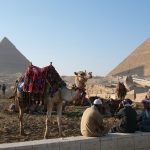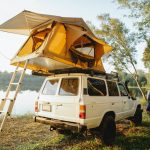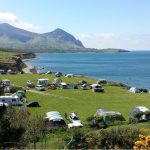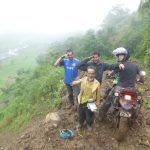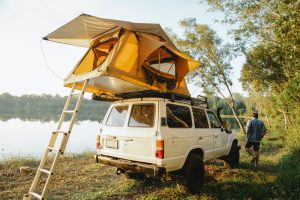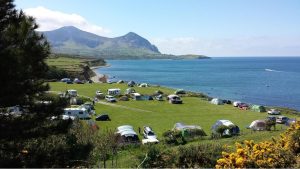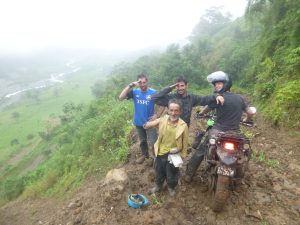Bolivia was frustrating from the moment Jade and I attempted to cross the border. A lunch break for the vehicle importation office meant that the sole worker vacated the premises for a generous two hours. This gave us ample time for idleness and to sit next to a toothless Bolivian woman that was cooking and serving up some sort of fried mystery meat and potatoes. Being hungry and curious, we purchased a plate to share and got no more than a few bites in before deciding that we could no longer be polite and pretend to be enjoying the mystery goulash meat, fried fat and dry potatoes. Placing the plate of food on the ground next to us for one of the many stray dogs to enjoy, we were slightly alarmed and amused at the same time when a grey haired canine came up, sniffed the plate and walked away in clear distaste, all without trying a single bite.
Shit! I thought to myself. If the stray Bolivian dog won’t eat it, what the hell did I just put into my body?!
After the paperwork was complete for the bike, Jade and I packed up our loose-ends and headed to our first destination of Copacabana on the southern end of Lake Titicaca. The ride was maybe only 20 minutes but we got an early taste of the poor quality of roads that Bolivia has to offer. Hundreds of potholes of varying sizes dotted the roadway – only to be balanced out equally as many bulges and cracks. They were at least five years post due for repair but hey, at least there’s a road I guess.
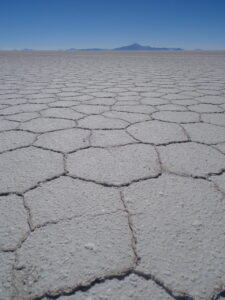
Copacabana
Copacabana conjures up images of the famous Brazilian beach in Rio de Janeiro. I haven’t been there yet but from the pictures I’ve seen, it’s nothing like the Bolivian version. Sitting on the tranquil shore of Lake Titicaca, Copacabana is a touristy little town with inviting restaurants, a local market, a collection of travel agencies and a plethora of stores featuring artisan goods.
Jade and I splurged by getting a room at Hotel Onkel Inn Torres de Copacabana. By splurge I mean we paid maybe three times what a hostel costs and it was worth every penny. The same room in the United States may cost five times what we paid in Bolivia. After the previous night in the dingiest dump in recent memory, we felt like royalty in our freshly built, modern design abode overlooking the world famous lake. In our eyes, we had arrived in near perfection.
Isla del Sol
Being that we were in Bolivia in early winter, the tourist traffic and lake activities were in the opposite of full swing. With options and time slightly limited, we chose an excursion to the much touted Isla del Sol (Island of Sun). The day started early and unusually as we quickly found out how Bolivia works. In an almost comical situation, a handful of boat workers and a dozen men from the tourist group (including myself) pushed with all our might to get the freshly painted dry-docked boat into the water. The locals then had to attach the outboard motors as the other ferries slowly cruised away. Unfortunately for us, the motors possessed about as much power and speed as a sail boat in a whisper of wind. We crept through the water for two hours as if we were trying to sneak up on the island. Thankfully the sun was out and the views were spectacularly close to a Mediterranean cruise except with a chilly wind and snow capped mountains looming in the distance.
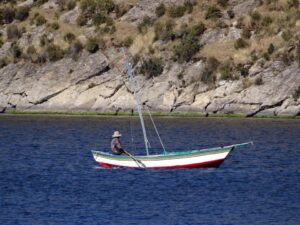
We seemingly circumnavigated most of Isla del Sol to get to the northern end of the island where we then departed to begin our tour. The Spanish-speaking tour was informative although the brief stop in the archeological museum was a little disappointing with its small and rundown exhibiton.
Walking to the ruins of the original Inca civilization on the northern end of the island gave me the impression of being back in the Greek Islands with the sparkling water, blue and white paddle boats, and the dry, rocky terrain of the island. The ruins themselves were eye opening in the sense of how long the island had been inhabited. Some estimates put occupation of the island beginning around 2200 BCE while the ruins date back to about the 15th century. The combination of isolation, terraced agriculture and access to fishing shows why this location has been occupied for so long.
At this point the guide concluded his part of the journey and gave us horribly vague directions for completing the rest of the hike on our own. A crude map and an unknown distance to cover in limited time added an unwanted sense of urgency and slight anxiety about reaching our departing ferry in time. On top of that, the unmentioned “tolls” of local people standing on the trail making you pay every half a mile to continue on added to a growing sense of frustration with the situation. Thankfully the views were a mesmerizing and distracting display but as the time dwindled, so did our patience. After several hours of brisk walking we made it down to the bottom of the island and onto the ferry with five minutes to spare! Relieved to have made it but irritated that we almost missed our ferry, we settled down for a mind numbingly slow journey back to Copacabana.
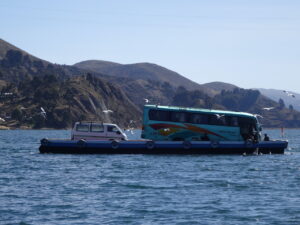
The Road to La Paz
Jade had only a few more days before returning back home and so we packed up our bags the next day to ride to La Paz to catch a bus to Uyuni to explore the salt flats. The problem was that Jade was in the depths of nauseating sickness and the very thought of traveling for the next 20 hours was about as appealing as snorting fiberglass. But if we wanted to go to to the salt flats together, we had to leave now. So with that in mind, my attempts of encouragement and help, and Jade putting on her big girl pants, we set out on a 4 hour ride to La Paz that ended up being one of the most frustrating, angering, and anxiety inducing experiences of my entire adventure.
The first 3/4 of the distance to La Paz was quite enjoyable; at least for me. Winding roads wrapped us around the hilly landscape and Lake Titicaca. A rickety old ferry that was basically a glorified barge took us across a small gap of the lake before I continued the race to La Paz. Jade was clearly miserably sick and I did my best to expedite the painful process for her while trying not to exacerbate it with intense turning and movement.
Then we hit the outskirts of the clusterfuck of a mess that is La Paz. Frustrating rage soon became my fuel.
The congested, dusty, and smoggy single lane highway slowed our pace dramatically despite my attempts to aggressively push my way up at every opportunity. Jade’s nauseous moaning was the literal voice in my ear but I could not get there fast enough. Then we hit the worst traffic of my entire trip. Complete gridlock.
It happened to be Bolivian Mothers Day and so that meant the already inadequate streets were congested further with vendors taking up lanes on either flank. The smog ridden congestion mixed with a confused and dying GPS (my electrical output was not functioning) did not help us in the slightest. After nearly 45 minutes of circling around the same five blocks a mere two times and doing my utter best to keep it together, we managed to bust out onto a dodgy looking road and seemingly head down into the general direction of where we needed to go. Optimism got the better of me and the GPS guided us right down into a dead end overlooking the potential road we needed. Overloaded, Jade had to hop off the back of the bike and pull me back so I could turn around.
Unfortunately for Jade, she also had to walk half way back up the steep hill before getting back on my bike because the combination of high altitude, overloaded bike, and insanely steep hill kept killing the bike.
After Jade, in all of her delirious sickness, was able to get back on the bike, we raced back up the hill, back through a pack of angry stray dogs, and using a general sense of direction, I wielded the motorcycle through the hornets nest of traffic and managed to snake out onto a more open road in what I knew would be our last attempt to reach our destination before the GPS died. Combined with the fact that the GPS was still giving us incorrect directions (repeatedly telling us to turn onto roads that simply didn’t exist in this dimension), the stress levels were at an all time high.
More wrong roads. More aggressive stray dogs. Finally, we found a main road that seemed to be descending into the ice cream scoop of a valley where La Paz is located. The poor barrios kept with us all the way down until we got to city level and then all of a sudden a glimmer of hope shot into me. The infrastructure improved, road signs appeared, and the buildings got nicer. And just like that we pulled up to our hotel. A wave of relief enveloped me. At that very moment the GPS died.
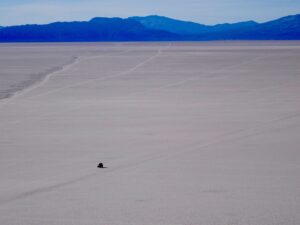
Salar de Uyuni
The remnants of a dried up prehistoric lake, the Salar is the largest salt flat in the world and occupies a wide expanse in the southwest of Bolivia. For myself, the alien landscape was a must-see. After a miserably frustrating trip through the barrios of La Paz, Jade and I consolidated our bags at the hotel and booked an overnight bus to the isolated town of Uyuni.
The bus ride was bumpy, frigid, sleepless, and topped off with having to change buses in the middle of the night because the first bus was unable to make it the whole way. Finally we arrived in the dusty town of Uyuni and began our search for a tour company to take us through the salt flats. Out of the dozen tour companies and dozens of four-wheel-drive vehicles, we ended up with a lovely British couple that we quickly established knew a mutual friend of mine from back home. Small world.
The first stop was the train graveyard. I’ve always wanted to tour a mechanical graveyard and this certainly satisfied that desire. Eerily set in the open and bright expanse, the rusting hulk of metal stretched farther than we had time for. After climbing in and on the skeletal remains of the trains, we got back into our 4×4 and headed to the salt hotel still being constructed where our guide prepared a fabulous lunch in the dreamscape.

Later, we blasted along the roadless salt flat towards the cactus strewn outcrop of Incahuasi. Once an island, the mound in the middle of the flat provided ample views of the overwhelming expanse of the salted land.
As the sun started setting we drove another twenty minutes to the base of a nearby volcano where our very basic hotel was located. Another delicious dinner was followed by some of the most awe-inspiring star gazing to be seen.
The nights and early mornings in the Salar are absolutely frigid and arising in the pitch black to begin the trek up Tunupa Volcano was not exactly the most inviting start, however, we knew the view was going to be well worth it. Sitting at 5,321 meters, the jagged top and mandarin-red color of Tunupa looks like a mountain plucked off of the surface of Mars. The trek was not easy and some of the party had to turn back, but reaching the crater provided astoundingly clear views of the surrounding landscape.
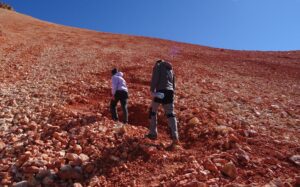
Descending Tunupa became arduous towards the end as our legs were starting to give out. A moment of respite came when we stopped off to see the hauntingly well preserved, 3,000 year old mummies of Coquesa.
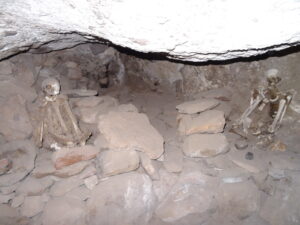
The day culminated in the mesmerizing mirror that surface water on the salar creates. Orientation and perspective warped in the surreality of the natural madness of salt, water, mountains and sky interplay.
With time drastically short before Jade’s flight back home, we boarded a slightly less painful overnight bus back to La Paz and back in time to the airport.
It was obviously sad to say goodbye to my girlfriend but there was a part of me that knew right then that our relationship was not meant to be. The experience of traveling with each other, especially through difficult and trying circumstances, revealed many irreconcilable incongruencies. Carrying that thought forward was certainly going to have an effect on my trip but I did my best not to dwell on it. I was now back on my own and doing what I loved.
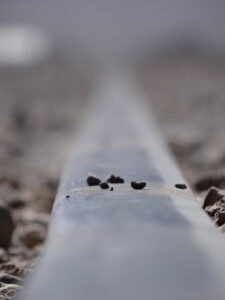
Up next; three days of jungle survival in the Amazon Basin: Chapter 12: Harsh Lessons in the Amazon
Start this journey from the beginning: Introduction

